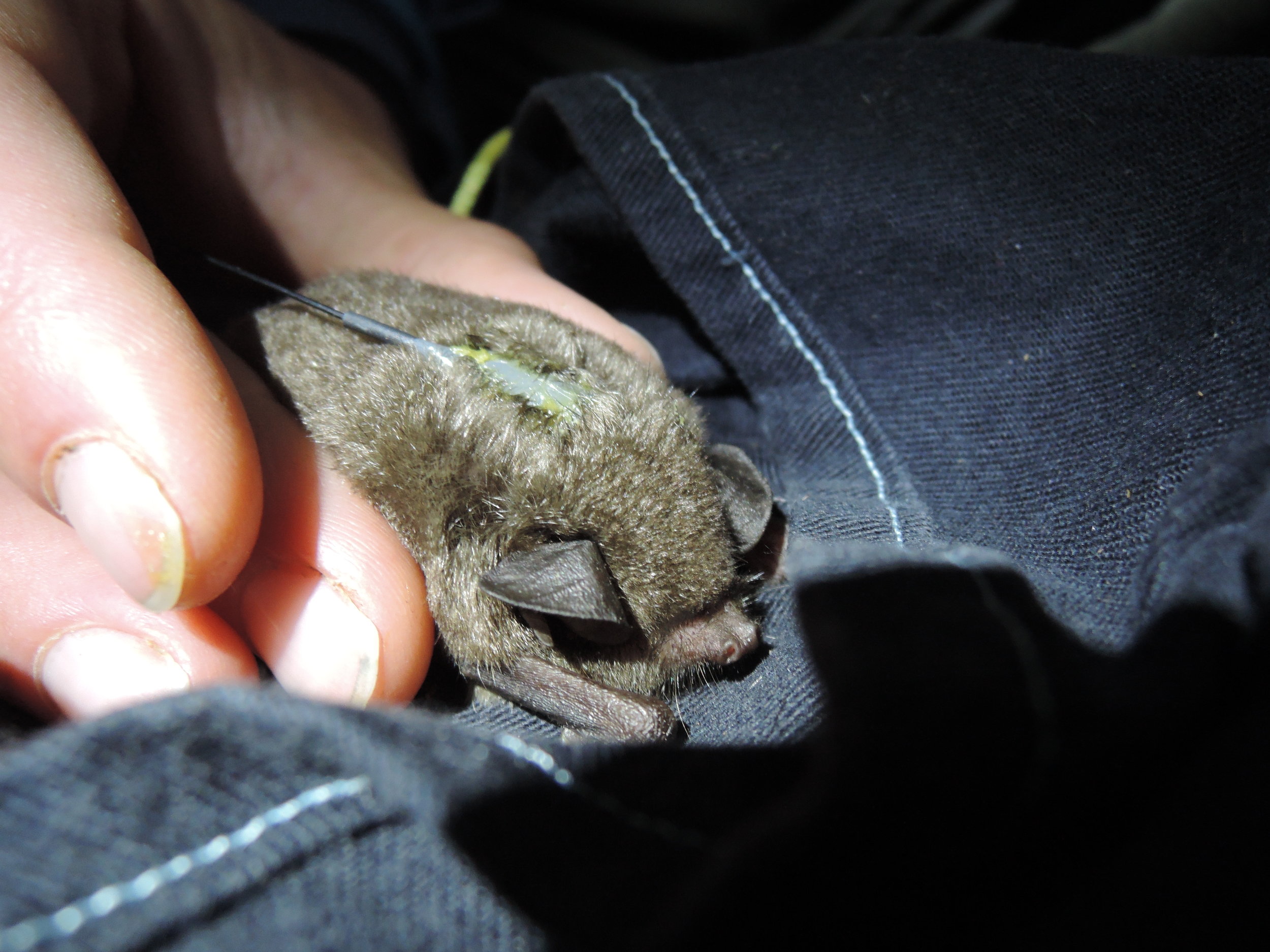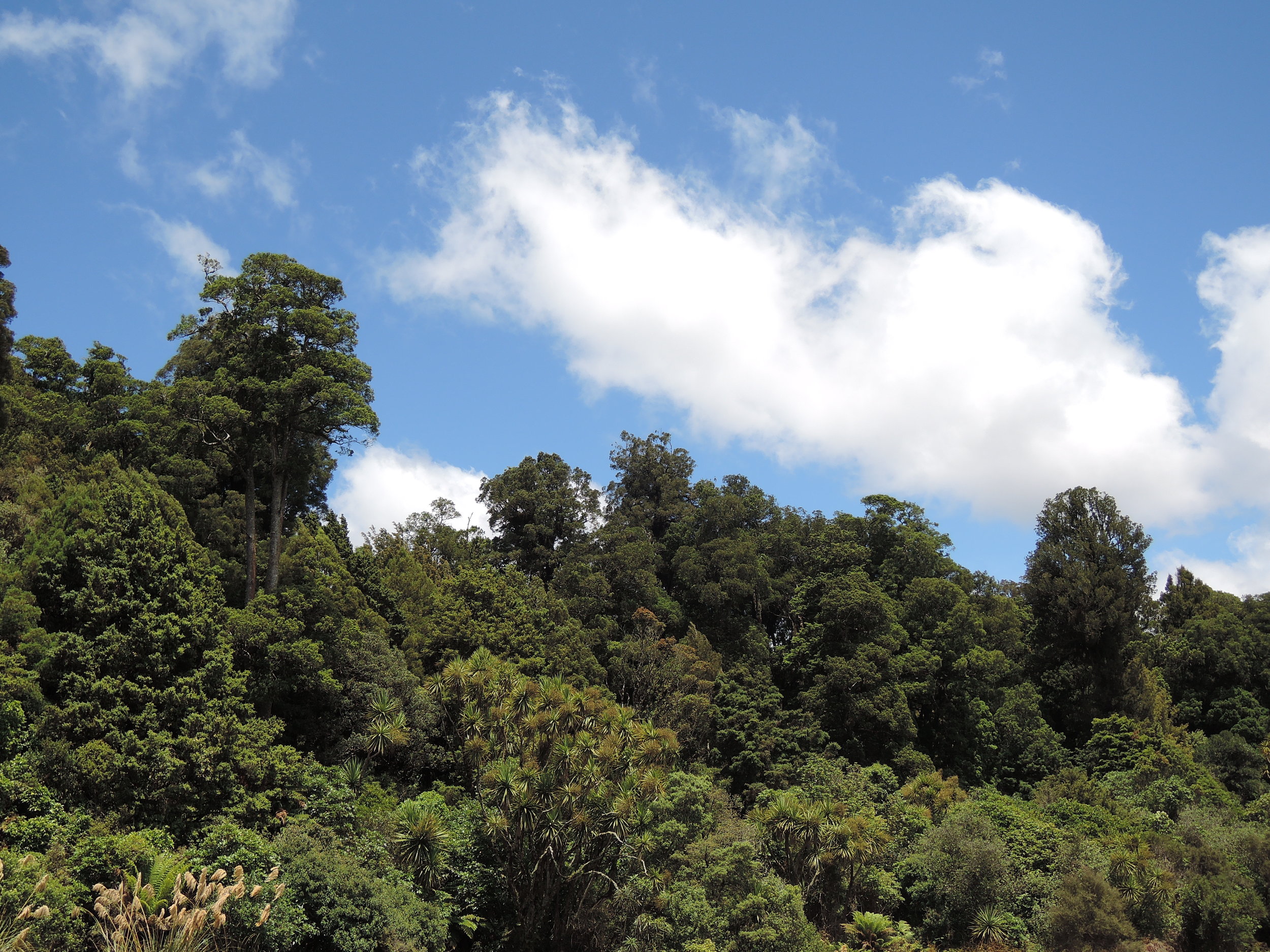On a roost above the forest floor, New Zealand’s short-tailed bats are singing for a mate, and Kathleen Collier is listening.
Illustration by Leigh Douglas
Ethograms is a monthly column published in collaboration with the Australasian Society for the Study of Animal Behaviour (ASSAB), showcasing the work of early-career researchers. Andrew Katsis is a PhD candidate at Deakin University, and an outreach officer for ASSAB.
Kathleen Collier’s greatest ‘what am I doing here?’ moment came one night at 11 o’clock, as she stumbled through darkness down a lonely forest road. Above her head, microbats dipped in and out of the canopy, filling the air with high-pitched clicks and whistles.
“I was carrying a tent fly and camping equipment in a pack on my back,” says Collier, “six 12-volt batteries in a pack on my front, a data logger in a satchel over each shoulder, a telemetry receiver around my neck, and an aerial in one hand, with which I was trying to track down a foraging bat.”
Collier, a PhD student at the University of Auckland, was targeting one species in particular: the lesser short-tailed bat (Mystacina tuberculate), a New Zealand native found in old-growth temperate forests. This small bat, weighing 10-20g with a wingspan of about 30cm, feeds mainly on insects, but will also consume pollen, fruit and nectar. Unusually, much of its foraging time is spent on the forest floor, rummaging for insects in the leaf litter.
But perhaps the species’ most intriguing behaviour is its courtship. Short-tailed bats attract a mate via a process called lekking, in which males aggregate in a single location to engage in competitive displays. At night during the breeding season, male bats commandeer a roost, usually a tree knothole, which serves as a platform from which to sing.
Along with scent, singing seems to be the males’ primary tool for impressing females. Bats are one of only a handful of mammal groups — humans and cetaceans among them — that actively learn their vocalisations. And the songs of the short-tailed bat are especially complex. “They range from ultrasonic through to the audible spectrum, so if you walk through the bush at night you can actually hear the bats singing,” says Collier.
University of Auckland PhD student Kathleen Collier is studying the mating behaviour of New Zealand's short-tailed bat. © Kathleen Collier; © David Mudge.
A single roost can be used by multiple males over the course of the night. But it’s unclear why bats share their roosts, or if there’s a dominance hierarchy that determines their performance order. Through her research, Collier hopes to understand how the bats attract a mate and what makes some individuals more irresistible to females.
To help decipher the species’ mating system, Collier has spent many sleepless nights in Pureora Forest Park, 78,000 ha of native forest in central North Island. About 80% of the bats in her field site have been fitted with Passive Integrated Transponder (PIT) tags, akin to the microchip inside a dog or cat. PIT-tag readers set up at the bats’ roost sites identify tagged individuals as they approach.
When Collier spots a male bat that she’d like to study, she constructs a harp net near his roost site in the fading hours of the evening. If the bat is obliging enough to be caught, Collier attaches to his back a small transmitter that sends regular body temperature measurements to a nearby data logger. Changes in body temperature, paired with audio of the males’ singing performance, can offer some clues about the energetic costs of attracting a mate. If the bats don’t visit their usual roosting sites, Collier can sometimes locate them by radio telemetry, using an aerial to hone in on their transmitter signals.
Collier, who has just finished her first field season, hopes that her data will shed some light on the species’ odd mating behaviour, and perhaps assist with its conservation, as well.
The short-tailed bat, once widespread across the country, is now listed as Vulnerable on the IUCN Red List, due to habitat clearance and predation by stoats and rats. As the remaining populations become more fragmented, it may be necessary to translocate bats to establish new populations or bolster existing ones. If this happens, understanding the species’ mating system will help researchers select high-quality individuals.



New Zealand has three native bat species, all of which are either extinct or in decline. A closely related species, New Zealand's greater short-tailed bat (Mystacina robusta), was most likely driven to extinction by rat predation, and hasn’t been seen since 1967.
It’s easy to underestimate the importance of bats in the wild; most people rarely encounter them in their day to day lives. But these small mammals are key to a healthy ecosystem, serving as seed dispersers, pollinators and regulators of insect populations.
“They're also highly sensitive to a range of environmental stressors, including climate change, poor water quality, forest loss and fragmentation, and the presence of pesticides or other toxins,” says Collier. “Studying bats can thus provide us with early indicators of environmental disruption and help us to monitor its effects.”
Of course, this study species does have its pitfalls. Bats are faster and more mobile than your average researcher, who must chase their target by torchlight while negotiating streams and undergrowth. “Oh, and the fact that they're nocturnal,” says Collier. “Sleep quickly becomes a very precious commodity”.
Back on that lonely forest road, lugging kilograms of equipment across uneven ground, Collier briefly began to second-guess her entire project.
“I was trudging along,” she says, “wondering whether the university would pay for my eventual knee-replacement surgery and thinking evil thoughts about my field assistant — sleeping like a baby back at the house.
“But there were glow-worms lining the banks on either side of the road, and moreporks calling in the trees, and the Milky Way right overhead. Suddenly it didn't seem quite so bad”.
Edited by Sara Paradowski
































































